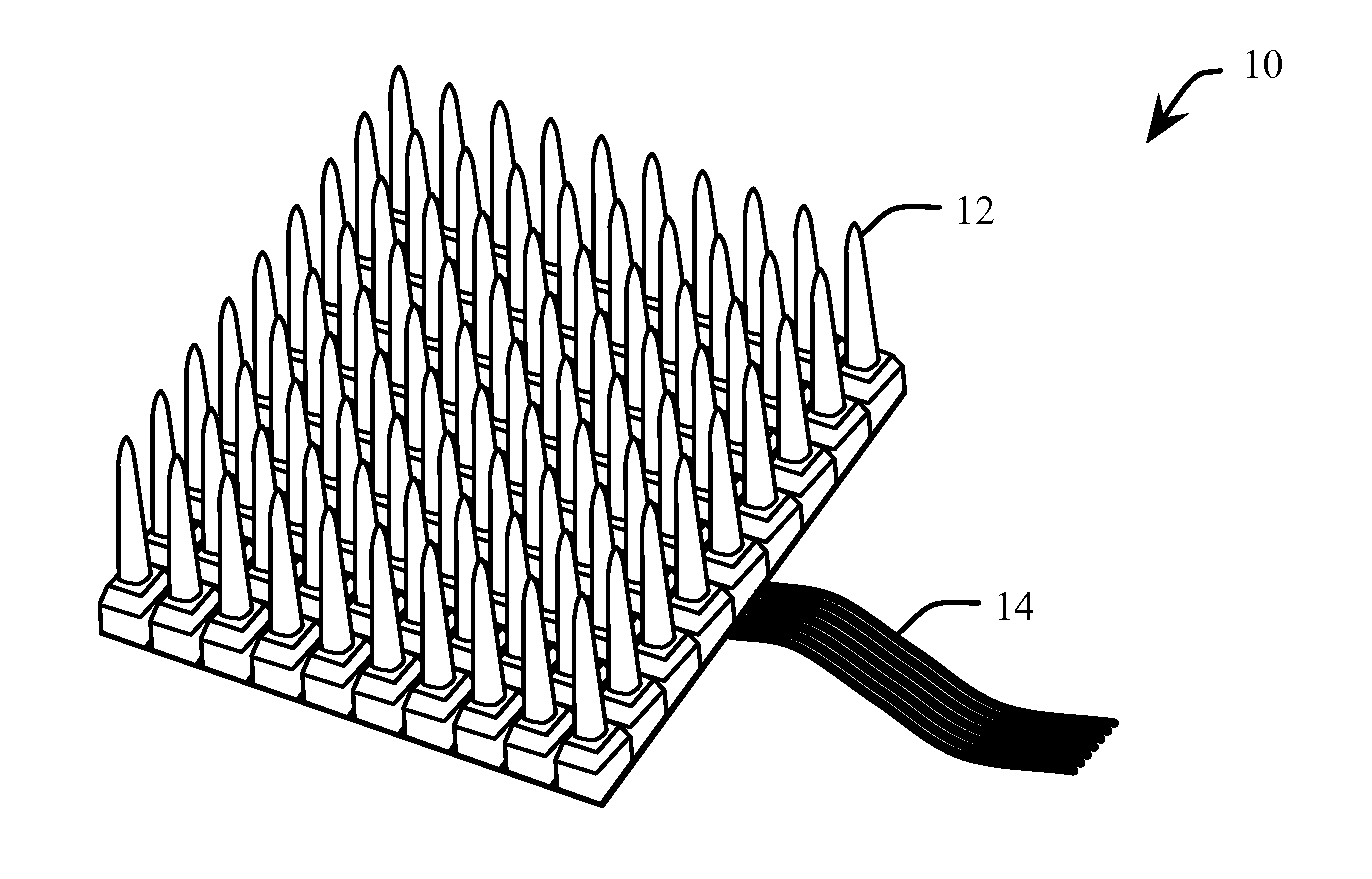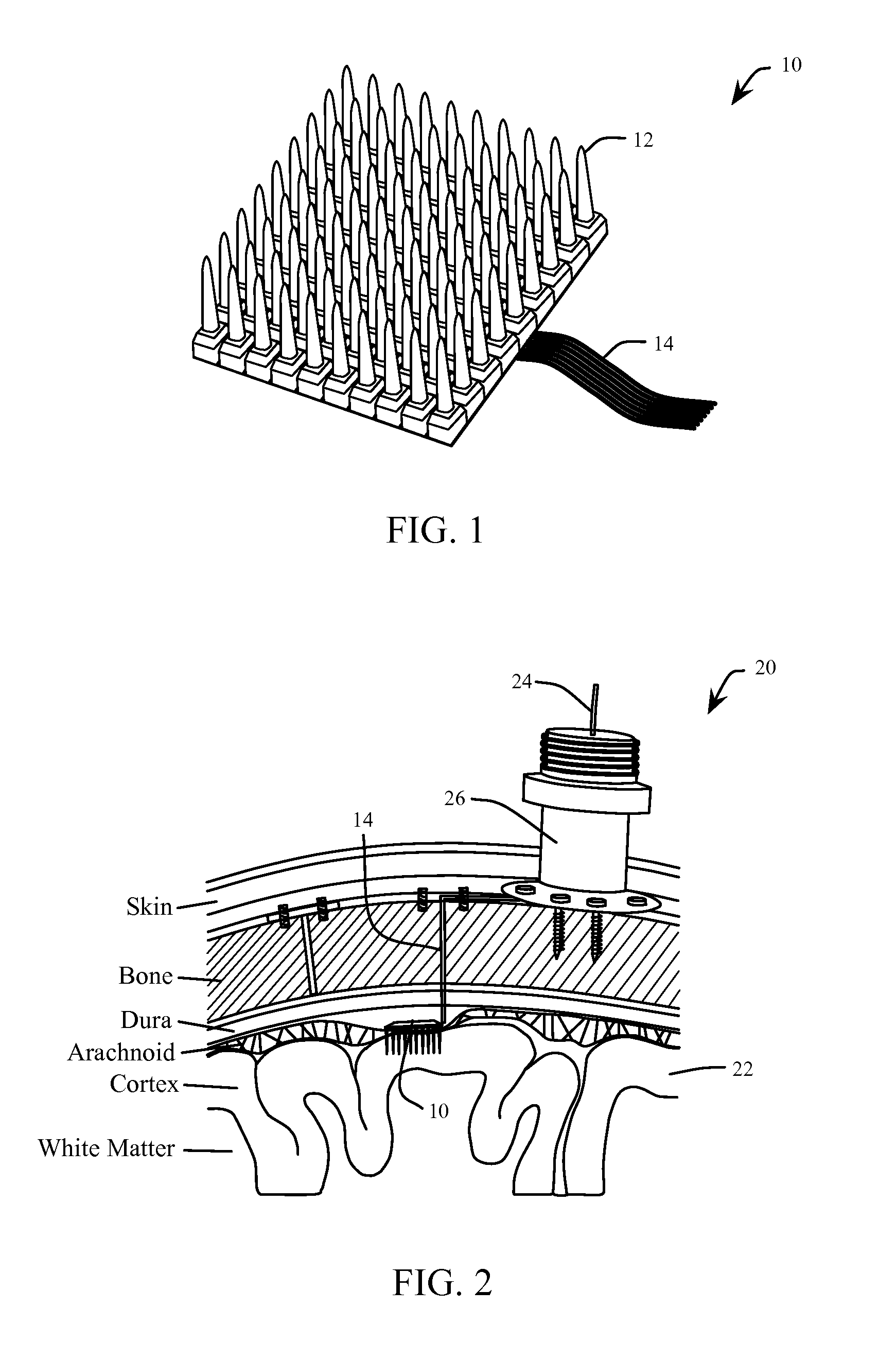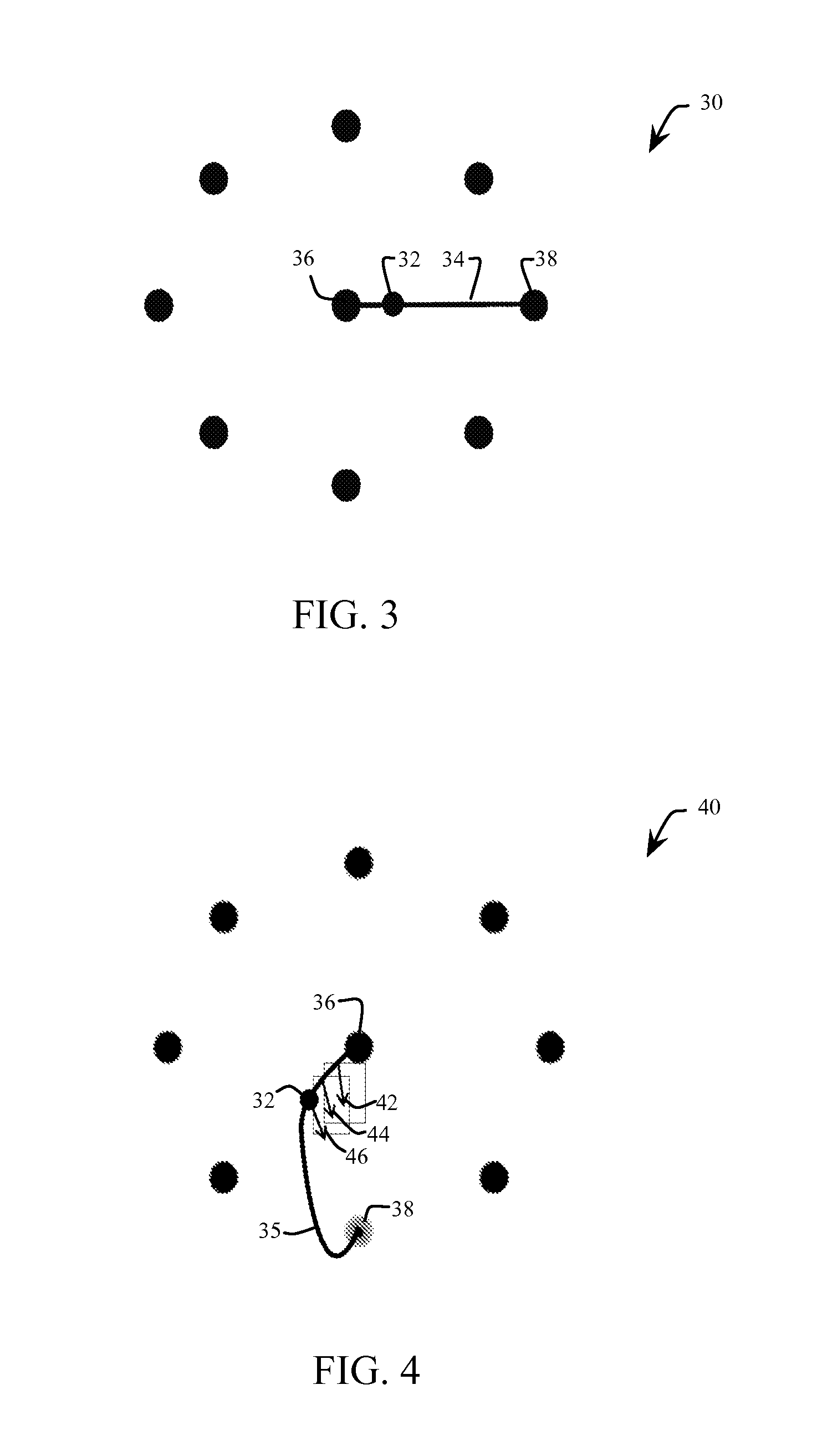Context-Aware Self-Calibration
a self-calibration and context-aware technology, applied in the field of control systems, can solve the problems of reducing the autonomy and quality of life of those affected, degrading the quality of neural decoding, and existing assistive devices for people with severe motor disabilities
- Summary
- Abstract
- Description
- Claims
- Application Information
AI Technical Summary
Benefits of technology
Problems solved by technology
Method used
Image
Examples
Embodiment Construction
[0031]Embodiments of systems and methods described herein provide for the autonomous control of assistive devices by disabled persons whose neural pathways have been compromised. For example, paralysis following spinal cord injury, brainstem stroke, or amyotrophic lateral sclerosis (ALS) can interrupt the neural pathways between the brain and parts of the body, thereby limiting volitional movements. A neural interface system that can form a bridge across the compromised neural pathway greatly improves the autonomy of these disabled persons, by restoring motor function to functional levels. In some embodiments, an individual controls a prosthetic limb with the bridged neural pathway. In another embodiment, a robotic arm or other remote device is similarly controlled. Embodiments of the present disclosure also include adaptive measurement of biological signals for diagnostic applications, not involving the control of a device.
[0032]Autonomous control of assistive devices is enabled th...
PUM
 Login to View More
Login to View More Abstract
Description
Claims
Application Information
 Login to View More
Login to View More - R&D
- Intellectual Property
- Life Sciences
- Materials
- Tech Scout
- Unparalleled Data Quality
- Higher Quality Content
- 60% Fewer Hallucinations
Browse by: Latest US Patents, China's latest patents, Technical Efficacy Thesaurus, Application Domain, Technology Topic, Popular Technical Reports.
© 2025 PatSnap. All rights reserved.Legal|Privacy policy|Modern Slavery Act Transparency Statement|Sitemap|About US| Contact US: help@patsnap.com



